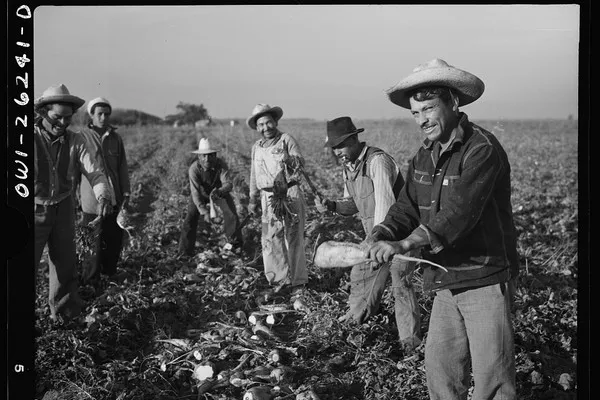For decades, economists have studied the impact of immigration on domestic labor markets. As a shortage of domestic farm labor has led to increased participation in the H-2A visa program, a brief look back at past immigration policies helps frame why migrants from Central and South America have largely been associated with filling necessary agricultural jobs in the U.S.
Past immigration policies enacted to support U.S. agriculture
Federal oversight of immigration began in the U.S. in 1891 when Congress established the Office of Immigration, according to the U.S. Citizen and Immigration Services website.
In an effort to decrease immigration from Europe, a bipartisan special committee called the U.S. Immigration Commission (known as the Dillingham Commission after its chairman) was formed to identify issues pertaining to high immigration rates to the U.S. from Eastern and Southern Europe and provide solutions for capping those rates. Published in 1911, the commission’s 41-volume report only briefly touched on immigration from Mexico and identified Mexican immigrants as the best solution to the labor shortage in the Southwest leading up to World War I and proposed exempting Mexicans from immigration restrictions. New European immigration was seen as the greater threat to the American workforce at the time, and due to the geographic proximity of Mexico and the ability of Mexican laborers to easily return home after a short term, the reports largely dismissed fear of immigration from Central and South America, citing the kinds of jobs those migrant workers occupied as both underpaid and highly labor-intensive.
A few decades later, in 1942, one of the first agricultural immigration policies in the U.S. was passed by executive order. That order established the Mexican Farm Labor Program and, subsequently, the Bracero Agreement was made. The agreement provided short-term contracts to millions of Mexican men to legally work in the U.S. agriculture and railroad construction industries. Spanish for “arms,” braceros was the moniker given to the men in the program who filled jobs on farms in place of the millions of U.S. soldiers who were deployed to fight in World War II. By 1964, when the program was terminated, an estimated 4 million Mexican laborers had helped support the U.S. through war and various economic crises.
It was during that same period that the Immigration and Nationality Act (INA) of 1952 authorized the H-2 nonimmigrant visa category — the precursor to the H-2A program — which officially permitted the recruitment of foreign farmworkers to the U.S. on a temporary basis.
However, even as the Bracero and H-2 programs continued to recruit temporary workers from Mexico, federal immigration authorities led roundups of undocumented Mexican nationals for deportation, ultimately claiming to have deported 1 million Mexicans between 1953 and 1954.

Concerns over immigration grows, policies become more restrictive
Fast forward four decades, when the Illegal Immigration Reform and Immigrant Responsibility Act added Section 287(g) to the Immigration and Nationality Act in 1996. Often referred to simply as 287(g)s, the provision authorized U.S. Immigration and Customs Enforcement to partner with state and local law enforcement agencies to perform immigration officer functions under the agency’s direction and oversight, explained Genti Kostandini, a professor of agricultural and applied economics at the University of Georgia College of Agricultural and Environmental Sciences (CAES).
